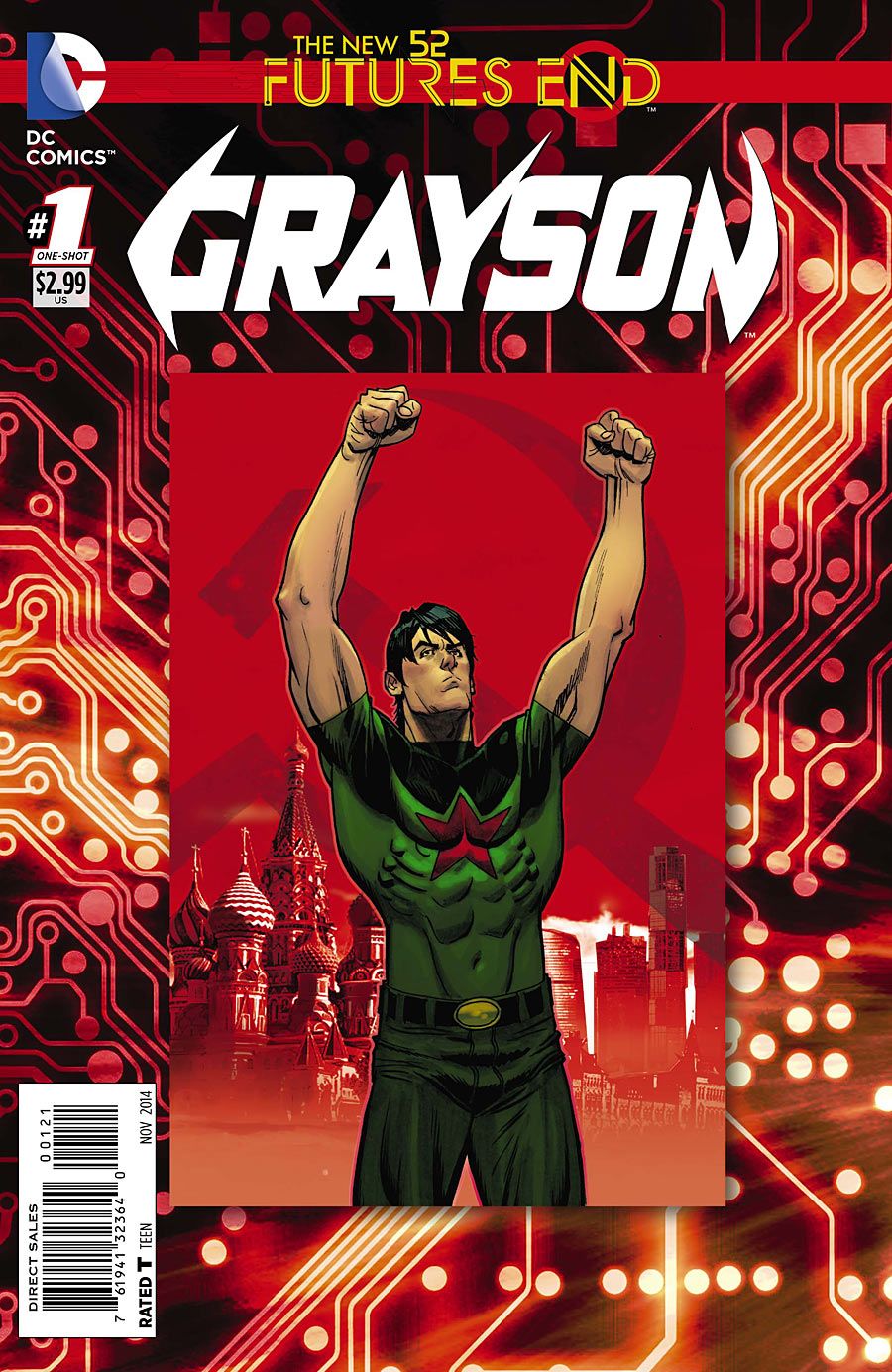With a dramatic leap forward, Dick Grayson and Helena Bertinelli of Spyral jump right into the "Futures End" event as the series takes a flickering glimpse into their potential future. Although the fledgling title takes a brief detour away its developing story, its quality never wavers, despite how little time readers have had to adjust to Dick's new situation. Tom King, Tim Seeley and Stephen Mooney's "Grayson: Futures End" #1 is a fantastic example of a tie-in done right, serving readers with a compact one-shot that's as poignant as it is brutal.
Five years is a lot of time to cover in the space of twenty-two pages, but Tom King and Tim Seeley pull it off magnificently, highlighting the important events that lead up to the event in reverse order. "Grayson: Futures End" reads like a flipbook, in that it offers fleeting snapshots of Dick and Helena's journey and ends all too soon. Just about every page offers its own flashback; although this structure is a little jarring at first, its effectiveness quickly becomes evident. King and Seeley tie each episode together through a series of key words and motifs; colorist Jeromy Cox makes an excellent contribution by linking Dick's Russian uniform to his original Robin outfit through his use of red and green, packing an extra emotional punch just before the issue's conclusion. For its all backwards momentum, the story has a clear, strong build that will leave readers breathless when it arrives at the final reveal, with what feels like a sly smile from the writers. Further, King and Seeley provide some truly haunting moments, particularly when Dick is faced with devastating destruction and tragedy.
Where King and Seeley's story absolutely does the character justice, Stephen Mooney leaves the reader wanting at times. His facial features can't quite carry the weight of the more impactful scenes; in fact, they're rather static in the shuffle from panel to panel. Likewise, the action comes across as stiff. The backgrounds are often blank, with Cox filling the panel in with one solid block of color instead, leaving the world without much detail. He does, however, adequately propel the story along. His style calls for a lot of shadow and shading, which aptly suits the atmosphere of a dour event like "Futures End." Cox adds to this gloomy dimension with a palette that skews darker, using bright colors like red and green only when it enhances the plot. Mooney keeps consistent with identifying markers for our main characters, keeping Helena in her trademark black-and-white cross top and Dick in a tight T-shirt, albeit both with stars. Though the issue's artwork isn't exactly earthshattering, it does what it needs to directly and practically.
Excellently structured and unexpectedly emotional, "Grayson: Futures End" is just as much of a pleasant surprise as the rest of the series so far. Although the art could be just a bit stronger, King, Seeley and Mooney produce an issue that is well worth the read in its genuine chemistry, character-revealing moments and tight plotting.

